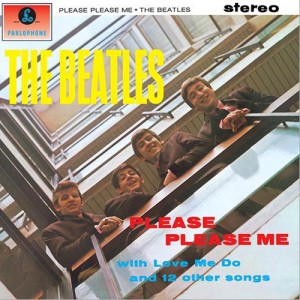 As I write this, I’m listening to the Monkees’ new album. Do you believe that? After 50 years, the Monkees are still relevant (as of today, the album is #1 on Amazon). Stream-of-consciousness reactions:
As I write this, I’m listening to the Monkees’ new album. Do you believe that? After 50 years, the Monkees are still relevant (as of today, the album is #1 on Amazon). Stream-of-consciousness reactions:
- Good Times! The subject is typically Monkees: Music everywhere, dancing in the streets, etc. Vocally, there’s a lot of trying really hard — especially from the surprising inclusion of Harry Nilsson’s original vocal track from 1968. Micky adds good harmony, but it sounds dated (because it is). Just not sure how the decidedly 1960s lyric There’s a good time comin’ on; I can feel it in my bones resonates with today’s listeners — even old ones like me. Minimal groove. Meh. I do get why Micky wanted to keep Nilsson’s voice on the track, though; they were close friends for many years.
- You Bring the Summer. Total 90s feelgood jangly happiness. It’s probably partially due to studio sweetening, but Micky sounds very much like he did 50 years ago. Can I just say how much I hate this? I know, sour grapes so get over it. The tune ends with a repeated, hooky riff with what sounds like backmasked guitar. Why I immediately thought of the Partridge Family, I don’t know. Listen to it and see if you know what I mean.
- She Makes Me Laugh. I like the hook on the chorus. More 90s feel (the track was written by the guy from Weezer, after all, and Andy Partridge wrote track 2). It still blows me away that Micky is popping off high G-sharps full voice at 71 years old.

- Our Own World. Easy shuffle on the opening, strangely reminiscent of the themes from Welcome Back, Kotter and The Courtship of Eddie’s Father. Short, cute, well done. That Micky tho…
- Gotta Give it Time. The first dog. Goes nowhere, but again, Micky’s vocals save it from crashing, giving a definite nod to “Words” and “I’m Not Your Steppin’ Stone.” You know, the barky-shouty. Harmonically drab “bridge” tune to get us to the second half.
- Me & Magdalena. Oh, my. Now you’re talking. Vintage, priceless Nesmith and his countrified lilt, with beautiful consonant harmonies. My sis Mavis will love this one. …And everything lost will be recovered, when we drift into the arms of the undiscovered. A total treat.
- Whatever’s Right. It wouldn’t be a Monkees album without Tommy Boyce & Bobby Hart (Monkees theme, Last Train to Clarksville, She, Steppin’ Stone). Predictable but zippy, this one, written many years ago and unearthed by Hart for this album, brings back some of the original flavor of their biggest hits.
- Love to Love. Minor key intro in basic heavy 4, complete with “I’m a Believer”-style Vox organ…pretty predictable, until you’re stopped dead by the voice of Davy Jones. Written by Neil Diamond and recorded in 1967, it got caught up in the middle of the Monkees’ break with Don Kirschner, when the boys insisted on being allowed to write and record their own music and play their own instruments. I’m glad they found the song and retained Davy’s original vocal track.
- Little Girl. OK, so let’s get this out of the way. I have never really loved Peter Tork. It’s not his voice, either; it’s him. He’s just too…I dunno…odd. And not odd in the hippy sort of “I’m my own man, man” way, but odd in the “gee, that’s not really funny” way. His band, the groaningly punny-named Shoe Suede Blues (eye roll), has been working for many years, so he’s no stranger to the studio or making full time music, but his voice — usually very lyrical — just sounds like an accountant on karaoke night. And the strangeness of the minor-key waltz with its many modal shifts and unpredictable chord progressions (come on, Pete, you have to give us something), not to mention bizarre off-accents on syllables…it’s just a jangled mess that sounds like it was written in 1967 after an all-nighter of ganja and sangria and esoterica. Which it probably was.
- Birth of an Accidental Hipster. I suppose they had to have a Sergeant Pepper-like anthem, with changing tempos and tonal centers, and the obligatory riff outro with no vocals. Still, Mike and Micky take really good turns at singing lead. They truly have lost very little, and I hope it’s real, because if they tour…
- Wasn’t Born to Follow. A winner. Totally love the groove. A remake of the Byrds hit from ’68, written by Carole King and Gerry Goffin, the song here makes a total departure from the original 2-beat feel, going instead for a heavy acoustic 4 that instantly locks in. It’s the kind of song I want to get my guitar and play along with. Pete completely redeems himself on this one.
- I Know What I Know. Pretty much aimless in its harmonic progression (yes, diminished chords are spooky cool, but seriously, let’s move on) yet still pleasant, the piano-and-strings-only love ballad written and sung by Mike hits its mark simply: He basically says “I love you” a dozen different ways over the span of three and a half minutes. I can’t decide if the four straight measures of nothing but repeated major thirds at the beginning and the end are relaxing or infuriating. Still, the fact that a 73-year-old man pulls off a pretty challenging melody with minimal strain is very impressive, and I like so much of his other stuff — Nez gets a free pass on this one.
- I Was There (And I’m Told I Had a Good Time). The title was familiar to me instantly, because in his memoir, Micky mentions something to this effect. Silly and fun and clanky, it features some of the funny studio chatter that often made it onto later Beatles albums.
I deliberately did not read any other reviews of this record until I’d done mine. Surprising how my critique differs so completely from others’. I guess that’s why I teach music instead of criticism. However, I’m willing to wager that many of today’s music critics weren’t even born yet when my sister and I and our friends were listening to Monkees music and watching their TV show religiously every Monday night. I was young, but I had an undeniable connection with them in their famous years. I bought the 45s, and I knew all the words to their songs. As a 4th grader. So there.
My overall impression is that this project was just plain fun for the three surviving Monkees, now all in their 70s; kind of a final bow before they hang it up for good. The voices are still wonderful to listen to, although the songs definitely reflect their individual writers’ famous styles. I like that, actually. It wasn’t formulaic or uninteresting, and besides, you don’t have to love every tune to love the album as a whole. And I do.
Favorites: #1, Me & Magdalena. #2, Wasn’t Born to Follow.


